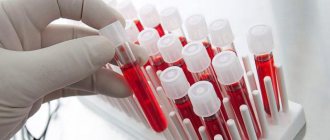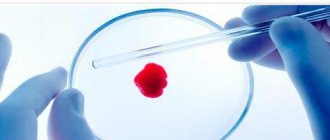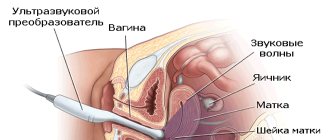A PSA test is a blood test to detect prostate-specific antigen for males.
This antigen is usually produced by the prostate gland.
Using a PSA test, you can detect cancer or other pathologies such as prostatitis or prostatic hyperplasia.
For this analysis, which is important, preparation for taking it plays a big role, so a man must know several rules and follow certain recommendations for the correct conduct of the analysis in order to avoid additional problems.
Firstly, you should know that the PSA test is done on an empty stomach , the time interval between eating and taking the material for research should be no less than 8 hours. If triglyceride determination is required, the time period is at least 12 hours.
Secondly, only a certain amount of water can be consumed for a certain time , but other nutrient-type liquids must be abandoned. The list of such drinks includes tea, coffee, cocoa, milk and yoghurts, fruit drinks, fresh juices, juices, and sweet soda.
Preparation for a PSA test also includes certain dietary behaviors. A few days before the PSA test, a man must follow a certain diet, which includes avoiding fried, fatty, spicy and salty foods.
It should be remembered
Alcoholic drinks are also prohibited before the analysis. It is better to quit smoking a day or two before, but if the client is a very heavy smoker, you should abstain at least a couple of hours before the analysis.
In addition to the above rules and recommendations, you need to take into account that before taking a PSA test, the following are undesirable for a man:
- Cycling, horse riding and extreme entertainment.
- Training, various physical activities, including regular exercises or warm-up.
- Sexual relations.
To perform a PSA analysis, there are certain indicators, which include:
- Examination of men over 40 years of age for regular prevention. This examination is mainly carried out to identify the dynamics of fluctuations in PSA levels.
- Medical examination of patients in accordance with treatment indications.
- Presence of suspicion of the presence of a prostate tumor as a result of other examinations.
- Routine monitoring of the process of treatment for cancer, as well as the effectiveness of the medications used.
An important factor for the correct completion of the PSA test is the absence of massage, cystoscopy, laser therapy, biopsy, ultraviolet examination, digital rectal examination, or ergometry for several weeks before the test.
Carrying out blood diagnostics
The PSA test involves donating 5–9 ml of venous blood, which is usually taken from the cubital vein. The procedure is prescribed for the first half of the day, this is due to the fact that the amount of protein depends on the time of day. After applying a pressure bandage or tourniquet to the patient’s forearm, you will need to vigorously squeeze and unclench your hand until the vessel appears.
The nurse will treat the future puncture site with an alcohol solution and insert a thin needle into it. When it is directed against the blood flow, the process of collecting it will begin. At the last stage, a sterile cotton swab is applied to the wound, the needle is removed, and the tourniquet is removed. Violation of the integrity of the vessel can lead to the formation of long-healing hematomas of a purplish-violet color. To avoid a painful reaction, you need to press a cotton pad against the damaged area of the epidermis until the bleeding stops completely.
During the procedure, it is necessary to pay attention to the laboratory assistant’s observance of asepsis - he must have disposable gloves and a clean gown
Procedure for donating blood for PSA
To determine a person's PSA level, a blood test is taken. Testing requires venous blood and the standard blood volume is 5 ml. Blood sampling is carried out in the standard mode: the patient sits on a chair and puts his hand on the table, then the nurse wipes the injection site with alcohol, inserts a syringe into the vein and draws the required amount of venous blood. If necessary, blood can be taken from the patient in a supine position (for example, in case of disability or loss of consciousness). After drawing blood, a cotton swab with alcohol is placed at the injection site, and the hand itself is clenched at the elbow for 5-10 minutes.
Deadlines for issuing results
Laboratory testing of prostatic blood protein lasts about a week on average. If the specialists do not have an excessive workload, results can be obtained 2-4 days after the procedure. It is believed that the form with the identified antigen parameters is valid for no more than a month. If during this time the patient has received one or another injury to the groin area, the diagnosis should be repeated.
In order to correctly donate blood for prostate PSA, it is necessary to adhere to a considerable number of aspects, which, for simplicity, are combined into separate logical blocks.
What is a PSA test?
Prostate specific antigen (PSA) is normally present in the blood of men. Its structure is a glycoprotein that is secreted by prostate duct cells. It is needed to liquefy the ejaculate - this is one of the important factors contributing to the implementation of male reproductive function.
Prostate-specific antigen is mainly determined as a tumor marker for prostate carcinoma. This indicator is a guideline when choosing the volume of surgery. After the therapy, its assessment indicates the effectiveness of the treatment. Also, its meaning is important in the diagnosis and treatment of prostate adenoma.
- The main amount of PSA is contained in the ejaculate. The amount of prostate-specific antigen in the blood is normally very small, which is due to the histohematological barrier.
- In various situations, serum PSA rises, indicating barrier disruption, most often due to tissue growth, inflammation or mechanical action.
Balanced diet
The most important rule before taking a PSA blood test is to review your usual diet. 2–4 days before the study, you need to stop preparing fried, over-salted, smoked, spicy and canned foods, sauces, and food additives for yourself. Eating fast food is also prohibited, as is drinking energy drinks, coffee, milk, strong black tea, store-bought juice and soda.
Regular dietary nutrition involves diversifying the diet by introducing the most healthy products into it:
| Varieties of food | List of permitted products |
| Porridge | Poltavka, rice, pearl barley, rolled oats, semolina, buckwheat, millet |
| Soups | Any with minimal fat content |
| Fruits | Apples, peaches, kiwi, mango, oranges, bananas, pears, nectarines, pomegranates, apricots |
| Vegetables | Carrots, ginger, potatoes, cabbage, tomatoes, pumpkin, cucumbers, zucchini |
| Meat | Beef, rabbit, chicken, turkey |
| Fish | At the discretion of the person |
| Beverages | Purified water, homemade fruit juice and compote, green tea |
Dishes can be steamed, baked and boiled. The PSA blood test is taken on an empty stomach, i.e. for 7-10 hours the patient does not need to drink or eat for a reliable result.
What data does the analysis contain?
Analysis results data
Clinical recommendations of the Association of Oncologists of Russia were published in 2019. The document provides acceptable discriminatory PSA values.
| Age, years | Free rate, ng/ml | Bound rate, ng/ml |
| 20-30 | Up to 0.4 | Up to 0.4 |
| 40-50 | 0,5–1,5 | 2,5-3 |
| 50-60 | 0,7–2,1 | 3,5-4 |
| 60-70 | 1,1–3,2 | 4,5-5 |
| Over 70 | 0,7–3,4 | 6,5-7 |
There are certain standards for PSA levels in the blood that do not indicate the development of pathologies
In patients undergoing examination with a diagnosis of prostate cancer, the following tests are performed:
- PSA density (total PSA per 1 square cm of prostate blood);
- rate of PSA growth - can be considered as an indication for a biopsy.
Only a doctor can interpret the results of a prostate specific antigen test. Treatment is a multi-stage process, requiring modern knowledge in the field of urology, oncology, pharmacology, laboratory science, and functional diagnostics. But every person should feel personal responsibility for timely access to medical specialists.
Important ! Attentive attitude to your future is the key to timely examination and, if necessary, successful treatment.
Test results should only be interpreted by a doctor with appropriate qualifications.
Medications
Preparation for donating blood for PSA involves stopping the consumption of pharmaceuticals 9–12 days before the procedure. The following categories are prohibited:
What does creatinine show in the blood?
- Tablet contraceptives.
- Ascorbic acid as part of any vitamin complex.
- Biologically active additives.
- Hormones.
- Transdermal drugs designed to increase testosterone levels.
- Means to enhance erection.
If the medications used include vital ones, their further use should be agreed only with the attending physician.
Optimal time for analysis
The best period for testing is the morning (before 10-11 am). This is done because most of the analytes are unstable during the day.
Remember that at least 8 hours must have passed since your last meal. If the analysis involves the detection of triglycerides in the blood plasma, then the “fasting interval” increases to 12 hours.
During this period, the patient can only drink a little water (still) and, of course, not eat anything. It is important! At the start of testing, the man should be rested; the day before, it is advisable to avoid excitement and try not to be nervous.
The biomaterial is collected from a vein. This is preferable because it causes less destruction of blood cells. Usually about 2 ml of blood is expressed, this volume is quite enough for further research.
If the patient suddenly feels unwell before the analysis (which may be due to forced fasting): dizzy, or possible fainting - in this case, blood is taken from him in a lying position.
For a more accurate diagnosis in men, a detailed, detailed clinical analysis is performed. And studies to detect free PSA are carried out to confirm diagnostic assumptions.
When there is a suspicion of cancer, a clinical analysis and blood taken to identify the free fraction are carried out simultaneously.
If the result shows a high PSA, the patient must be re-examined. Of course, the man's age will be taken into account. High prostate antigen values are monitored based on several blood tests. If there is a stable increase in PSA, the patient is recommended to undergo a pancreatic biopsy.
When receiving the test results, the patient pays attention to the amount of antigen in the blood. And here it is important to understand that often the PSA level falls into the “gray zone” (in the range from normal values to 10 ng/ml), which does not always mean cancer growth.
In 70% of such cases, high prostate antigen numbers are caused by benign pancreatic hyperplasia. And only a very large excess of the norm (more than 100 ng/ml) indicates oncology.
Prostatitis can also increase PSA levels. This is diagnosed in a third of young men. Thus, an accurate diagnosis can only be made after additional research.
In addition, an enzyme-linked immunosorbent assay may be offered. If this blood test also shows a positive result, then the likelihood of cancer is very high.
In this case, doctors insist on immediate surgical intervention. Another effective prostate treatment is laser blood purification. It is carried out in combination with the indicated instrumental and drug therapy.
Remember: only a doctor should interpret test results.
There are cases when PSA is normal, but the patient can feel a thickening of the pancreas. In this case, a repeat study is scheduled after 3 months.
Physical exercise
It is worthwhile to fully prepare for donating blood for PSA, so physical activity associated with stress on the external genital organs and pelvic part should be absent. 5 days before visiting the medical center, you should avoid swimming, choreography, horse riding, jogging, exercise, fitness, cycling or motorcycle riding, football, etc.
Care should be taken to maintain psychological balance and create a measured daily routine, giving preference to your favorite type of leisure
What does an increase in PSA mean?
Fluctuations in the test result for determining prostate antigen from the “norm” value do not always indicate the development of a malignant prostate tumor.
- An inflammatory process localized in the gland;
- Prolonged urinary retention;
- Prostate ischemia;
- Prostate infarction;
- Taking certain medications;
- Age-related changes in antigen levels;
- Benign tumor (adenoma);
- Chronic prostatitis;
- Exacerbation of prostatitis;
- Prostate cancer
Difference from common prostate specific antigen
Free antigen is in a ratio of only 10% to the total, but it is this indicator that allows the doctor to determine the presence of benign or malignant changes in the prostate.
The normal level of free PSA is considered to be 0.93 ng/ml; this indicator can either decrease or increase.
Factors that influence changes in PSA levels:
- various inflammatory processes of prostate tissue;
- rehabilitation period after surgery;
- ejaculation that occurred shortly before blood collection for PSA measurement.
Total to free PSA ratio
At this time, there is no clear, generally accepted framework for PSA screening test indicators. We are talking about the likelihood of developing tumor pathologies of the “second heart” of men. In patients with a level of the complex antigen fraction of 4–10 ng/ml, biopsy responses indicate prostate cancer in 25–32% of cases, and with a level of more than 10 ng/ml - the possibility of such results is 50%. In men with confirmed prostate cancer, an antigen concentration of 1000 ng/ml or higher was detected.
The proportionality of total and free PSA, that is, comparison of two fractions of the marker, is carried out for more accurate diagnosis when the total form of the antigen increases from 4 to 10 ng/ml. These values are subject to debate and are called the border zone.
In half of patients with a benign prostate tumor, the serum antigen level is higher than the known norm in men. The size of the latter depends on the size of the gland itself, the degree of stenosis or blockage of the urethra.
Prostate adenoma
- prostate adenoma;
- bacterial prostatitis;
- PCa;
- active manipulation of the prostate;
- impotence;
- intense physical activity;
- ejaculation;
- dysuric phenomena.
Prostate-specific antigen is a very sensitive tumor marker and is effective in monitoring patients who have undergone appropriate treatment (radiation therapy, radical prostatectomy). The screening test reliably determines the condition of the tumor and has important prognostic value. To monitor the dynamics of the therapeutic course, it is important to compare the PSA concentration with previous values of this value, but not with reference figures.
When is it appointed?
An increased level of the indicator may not in all cases indicate the development of oncological processes. In addition, cancer diagnosis is also possible at low values.
Among the main indications for analysis are:
- signs of developing prostate disease;
- diagnostics to exclude or confirm the formation of a malignant tumor;
- examination for preventive purposes, especially if there is a hereditary predisposition;
- monitoring the process of therapeutic measures for cancer treatment;
- determination of recurrent conditions in patients undergoing surgery.
A blood test for PSA levels is also necessary in the following cases:
- professional activity involves harmful working conditions;
- the presence of a tumor in one of the close relatives;
- disorders of the urinary system;
- suspicion of the development of prostatitis or benign hyperplasia;
- presence of blood fluid in seminal or blood fluid;
- history of therapy with hormonal drugs;
- the presence of chronic pain in the pelvic area or lower spinal region.
To exclude overdiagnosis, which can significantly complicate a man’s life in the absence of disease, the analysis is prescribed solely according to indications. In addition, it is important to properly prepare for the study, which means eliminating all factors that could have a negative effect on the prostate.
What measurements are taken to clarify the diagnosis?
As noted above, with age, every man’s prostate gland enlarges. To reduce the effect of this natural increase on test results, PSA density is measured. This indicator is determined by dividing the quantitative indicator by the measured prostate volume. If the quotient obtained by division is above 0.15 ng/ml/cm3, there is a suspicion of the onset of pathological changes in the prostate gland.
In such cases, the person undergoes a biopsy. Another type of study is to determine how quickly PSA changes. If the value is higher than 0.75 ng/ml/year, the patient is very likely to develop a tumor. The analysis data helps to determine with sufficient accuracy whether a patient has metastases.
Indications
An analysis for free prostate-specific antigen in the blood is prescribed as part of screening for prostate tumors for all men after 50 years of age, as well as for men at risk after 40-45 years of age. It is performed in conjunction with the determination of total PSA, in this case the sensitivity and specificity of the study is more than 50%.
An increased result is the basis for making a decision to perform a prostate biopsy. In addition, the analysis is carried out in case of complaints of difficulty and increased frequency of urination, or with unsatisfactory results of ultrasound and digital examination of the prostate. For patients with an established diagnosis of prostate carcinoma, this laboratory test is indicated for the purpose of monitoring the course of the disease, preclinical detection of metastases, detection of relapses, and assessment of the success of treatment measures.
Free PSA in the blood is a marker that has tissue specificity, and not just cancer - an increase in its level indicates prostate disease, but not always cancer. The analysis is important for screening large groups of patients, as it is a safe and economical method.
Determination of deviations
In urology, when making a diagnosis, the PSA analysis method is not unambiguous - it is only a reason to carry out additional diagnostics, for example, a biopsy, MRI of the pancreas with contrast, TRUS.
Although tests for PSA levels are considered highly informative, a method is also used to determine the rate of increase or decrease in the level of this antigenic protein. Blood samples are taken, and based on the data from these studies, the increase or decrease in the total amount of antigen and the amount of free protein is calculated. With oncological manifestations, the annual increase is from 0.7 ng or more - for example, with a severe stage of progression, the rate of increase in total PSA is greater.
Recommended topic:
Products good for the prostate
The probability does not exceed 1% of cases when it is possible for the indicators to be normal during the development of prostate cancer, even with normal concentration data; this happens with the active progression of oncology.
In general form
For the total PSA indicator, statistics indicate that with an increased value, the chance of having prostate cancer increases. List of values for small changes:
- if total PSA is less than 2ng/mg, the chance of cancer is 7.1%;
- in the range from 2 and d 3.9 nag/mg, chance of cancer = 18.7%;
- from 4 to 5.9 ng/mg – 21.3%;
- from 6 to 7.9 ng/mg – 28.6;
- from 8 to 9.9 ng/mg – 31.7%;
- more than 10ng – 56.5%.
In total, a PSA level of 4 to 10 ng/mg gives the right to suspect a malignant tumor of the prostate gland; if the level exceeds 10 ng/mg and reaches 20 ng/mg, the likelihood of cancer is extremely high. If the number is even higher, the cancerous tumor is already at the last stage of development and metastases have already begun to separate, which pose a serious threat of secondary cancer.
In the last stages, in rare cases, the PSA content sometimes reaches a very high level: 0.001 mg in the blood, and sometimes above this threshold.
For free form
The principle of decoding data for a free fraction differs from the general one. Any deviation from the norm is important here: up or down. If the indicator deviates more from the norm, this means that a benign tumor is extremely likely; if it deviates less, it means an oncological process.
In medicine, the level of free PSA is measured to check the effectiveness of treatment for an established disease; if there is no progress in therapy, the PSA concentration will remain the same or worsen.
When is it appointed?
Determination of prostate-specific antigen content is indicated:
- If during the examination the doctor discovered an enlarged prostate.
- If there is a suspicion of an infectious-inflammatory process in the gland.
- During a comprehensive diagnosis of malignant tumors or prostate adenoma.
- When a man complains of painful symptoms characteristic of prostatitis: frequent painful urination, aching pain in the groin area radiating to the lower back.
- For men over fifty years of age for the prevention of prostate adenocarcinoma.
- If the patient’s relatives have been diagnosed with malignant neoplasms of the gland, he is recommended, starting from the age of forty, to take a blood test at least once a year to determine PSA levels.
- To evaluate the effectiveness of therapy for benign hyperplasia or malignant prostate tumor.
If prostate disease is suspected and during the treatment of detected tumors, a PSA test is prescribed. The norm for those undergoing treatment depends on the type of therapy. Thus, after surgical removal of the prostate (laparoscopic prostatectomy), the digital indicator of the prostate-specific agent, as a rule, decreases to 0.2 ng/ml, and after radiation therapy - to 1 ng/ml.
These indicators are very favorable and allow us to hope for a long period without relapse. If, after all types of therapy, the PSA level increases, we can state the further development of the tumor process. However, exceeding the PSA norm does not always indicate cancer. In rare cases, the result is influenced by the individual characteristics of the patient's tissue barriers.
How can you lower your PSA level?
You can lower your PSA level on your own. But you shouldn’t think that in the case of an elevated PSA rate, you can cope with this without the participation of a doctor. All the same, you must immediately go to a specialist to prescribe treatment. As a concomitant treatment, you can try to bring the indicators back to normal with the help of healthy foods that should be consumed as often as possible.
Vegetables are an ideal food to help lower PSA levels. In addition, the balance of hormones is also normalized with the help of vegetables. But it is worth noting that vegetables should not contain any chemicals or other chemical products. Broccoli and cauliflower are especially useful - these are exactly the ingredients in our menu that have a positive effect not only on the level of the substance in question, but also on human health in general.
DETAILS: The child complains of pain in the heart area
Tomatoes are also very beneficial for humans. Moreover, such a product not only has a positive effect on PSA levels, but also on the condition of the heart muscle. The most interesting thing is that tomatoes are healthier after heat treatment. It doesn’t matter how, it doesn’t matter in what dish. And all because the lycopene content increases in cooked tomatoes. But it is precisely this that is the main useful element found in tomatoes.
It is also necessary to drink delicious pomegranate juice every day, just not on an empty stomach. A huge number of studies have proven its beneficial effects on absolutely the entire human body. The heart, stomach and other organs improve their functioning through daily consumption of this juice. Next, green tea is very beneficial.
It bears repeating: Don't expect that eating these foods alone will lower your PSA without medication or medical attention. Proper nutrition only helps accelerate this decline. And after treatment, maintain the level of the substance. These products can be consumed in absolutely any form suitable for consumption.
How does the analysis work correctly?
To exclude possible false-positive diagnostic results, it is recommended to comply with the following conditions for collecting venous blood:
- blood is donated only after 28 days after pancreatic biopsy;
- Smoking is not allowed before the collection, in particular, at least an hour before the test;
- Diagnostics cannot be performed earlier than 10 days after prostate massage;
- 1-2 days before the test, remove fatty foods from your diet;
- on the day of delivery, it is not advisable to subject the body to nervous strain or physical exertion;
- You need to donate blood in the morning and always on an empty stomach, because after eating the results can be false positive.
If you have the slightest suspicion of problems with the prostate gland, contact a courologist who will help you understand and solve the problem. If a diagnosis of cancer is made and the PSA level rises above 0.1, this is a serious reason to consult a doctor again, because a possible cause is a recurrence of the disease.
If you ignore the body's signals, the result may be chronic prostatitis or prostate cancer, which will significantly worsen the quality of life.
Free PSA is the norm in men
Like any substance or antigen, there is a norm for free PSA.
The norm is different at every age. So, according to recent studies, this indicator in men from forty to forty-nine years old should be 0-2.5 ng/ml. Free PSA, the norm in men 60 years old, is 0-4.5 ng/ml. What about older people? Free PSA - the norm in men over 60 years of age - is in the range of 0-6.5 ng/ml. Exceeding these important numbers is dangerous. That is why you need to be examined and tested at least once a year. To take this test, you must immediately visit your doctor, who must write the patient the necessary referral.
Bottom line
This article talked as much as possible about what the normal level of prostate-specific agent content in the blood is and how to take a free PSA test. The agent maintenance rate was also described in detail. Let us recall once again the main points of the above.
You need to be examined by your doctor, as well as take all tests for the level of PSA in the blood once every year. The level may be an indicator of the presence of diseases such as cancer or prostate adenoma. You must follow all of your doctor's instructions. Follow a strict diet and take all prescribed medications.
Eating various vegetables, green tea and pomegranate juice also contributes to faster recovery. You should not self-medicate. This will lead to negative results. By observing everything that was described in this article, you don’t have to worry about your health.











